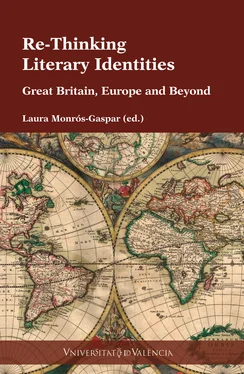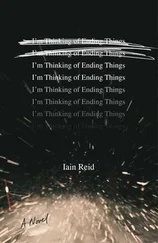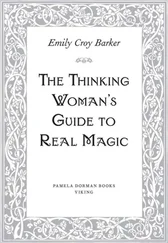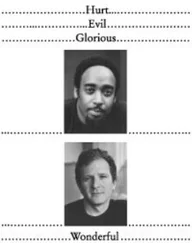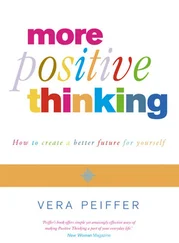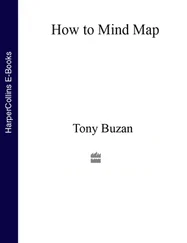AAVV - Re-Thinking Literary Identities
Здесь есть возможность читать онлайн «AAVV - Re-Thinking Literary Identities» — ознакомительный отрывок электронной книги совершенно бесплатно, а после прочтения отрывка купить полную версию. В некоторых случаях можно слушать аудио, скачать через торрент в формате fb2 и присутствует краткое содержание. Жанр: unrecognised, на английском языке. Описание произведения, (предисловие) а так же отзывы посетителей доступны на портале библиотеки ЛибКат.
- Название:Re-Thinking Literary Identities
- Автор:
- Жанр:
- Год:неизвестен
- ISBN:нет данных
- Рейтинг книги:3 / 5. Голосов: 1
-
Избранное:Добавить в избранное
- Отзывы:
-
Ваша оценка:
- 60
- 1
- 2
- 3
- 4
- 5
Re-Thinking Literary Identities: краткое содержание, описание и аннотация
Предлагаем к чтению аннотацию, описание, краткое содержание или предисловие (зависит от того, что написал сам автор книги «Re-Thinking Literary Identities»). Если вы не нашли необходимую информацию о книге — напишите в комментариях, мы постараемся отыскать её.
Re-Thinking Literary Identities — читать онлайн ознакомительный отрывок
Ниже представлен текст книги, разбитый по страницам. Система сохранения места последней прочитанной страницы, позволяет с удобством читать онлайн бесплатно книгу «Re-Thinking Literary Identities», без необходимости каждый раз заново искать на чём Вы остановились. Поставьте закладку, и сможете в любой момент перейти на страницу, на которой закончили чтение.
Интервал:
Закладка:
Julie Sanders manifests that ‘any exploration of intertextuality, and its specific manifestation in the forms of adaptation and appropriation, is inevitably interested in how art creates art, or how literature is made by literature’ (1). Yet adaptation and appropriation, as Emig and others have argued, ‘never happens inside an aesthetic vacuum, but inside ideologies and power structures’ (2012: 16). With these considerations in mind, the aim of this volume is to reflect upon the processes of (re) creation of art and literature within and against the backdrop of the shifting paradigms of Great Britain and Europe. Within this context, the book examines the (de)construction of modern identities through the (de)codification of classical and contemporary mythologies.
Under such premises, and in order to reflect on some of the countless literary interactions which occur between Great Britain and the world, the present book is divided into four sections which delve into the following main topics. First, issues concerning the relation between politics and poetics are raised by Teruel, Harrop and Gaviña in the contexts of contemporary Gaelic poetry in translation, the Scottish border and the social role of the Northern Irish writer. Translation is a key concept when dealing with languages and cultures in contact. On some occasions, global circulation of texts depends on translation, which inevitably constructs a qualitative distinction between languages which mostly responds to publishing and translation markets. Teruel’s approach, rather than focusing on the traditional conflict between a ‘usurper’ major language and a resilient minority one, is aimed at the ‘healthy tension between continuity and innovation’ which springs up between cultures in contact. The result, Teruel contends, is an aesthetic object which effaces political and national boundaries of all kinds for the sake of ‘poetical justice’. Following in the line of the literary interactions between the nations in Great Britain, the socio-cultural and political relationships between England and Scotland are scrutinized by Harrop under the umbrella of theatre and traditional practices of popular songs. At an ebullient historical moment—with Great Britain about to leave the European Union and Scotland demanding a second referendum for independence—Harrop borrows the changing mythic figure of the ballad-hero Tamlane to explore pressing contemporary issues of nation, identity and belonging. When a heated debate on new political realities is currently setting the European political agenda, Harrop turns to convivial and participatory performance to reflect on how contemporary appropriations of traditional songs might help to re-shape the concept of community and nation in a twenty-first century global context. Finally, two other popular myths, the shaman and the trickster, lie behind Gaviña’s approach to Northern Irish identity, which she sees as a central topic in Brian Friel’s drama. As one of the exponents of the Ulster intellectuals who from the 1970s began to be engaged with the problems of the community, Friel makes use of the archetypical figure of the trickster to voice his own political views on Northern Ireland. At the other end is the shaman, Friel’s own objective correlative which speaks for the inner self of the artist, his tribulations and torments when he engages, or not, with the problems of society.
The same principle lies behind the cultural interactions addressed in the ensuing section of the volume. The three chapters in the ‘Politics and Poetics’ section concur with the Bakhtinian premise that the literary process cannot be torn away from the cultural and socio-economic process (Bakhtin 1986: 140). With the title ‘From Spain to Great Britain and back’, the authors of section II in this book focus on the particular phenomenology of two major literary figures of world literature: Don Quixote and Don Juan. For Damrosch, it is only when a certain text moves, ‘when it is translated, when it is read at a remove, that the term “world literature” becomes a relevant descriptor’ (2003: 7). And indeed this is the case with Don Quixote and Don Juan who, as Borham and Sumillera argue in their corresponding chapters, have survived in Great Britain due to the debates on women’s access to knowledge which emerged in England in the late seventeenth and early eighteenth centuries, and the negative exemplarity of Don Juan in the 1600s. Sumillera recalls in Chapter 4 Salvador de Madariaga’s claim that Faust, Hamlet, Don Quixote and Don Juan are ‘the four greatest characters of European literature’. And indeed, even if Don Quixote and Don Juan were two eminently Spanish characters at the time of their literary birth, the works discussed by Borham and Sumillera provide ample evidence of how the two figures were informed with new cultural networks which in turn transformed them into British literary identities: the Hobbesian rake and the female Quixote.
With the turn of the twenty-first century, an increase in the globalization of the humanities and social sciences has encouraged new cultural negotiations between national particularism and cosmopolitan universalism. As a consequence, literature has become, more than ever, a space for cultural encounters. Streams of migration, artistic exchanges and political movements, for example, determine the export of culture or cultures in this globalized world. Such export of cultures inevitably entails the export of identities which are hunted both by the original and the ‘adapted’ cultures. The term identity, therefore, becomes more polysemic than ever as it is constructed by the tensions and polarities which stem from a globalized world. The chapters by Rubik and Fernández-Caparros in Part III of this volume provide substantial evidence of the literary interactions which emerge in this context of reflection and social performance of the self. The various voices of Eurydice which come together in Sarah Rhul’s homonymous play perform the different ways of overcoming the sense of loss in modern cultures. The death of Eurydice spreads beyond the borders of the Ovidian transformation which serves as its hypotext and transforms the stage into a Foucauldian heterotopia where the Ovidian landscape becomes Ruhl’s own prison of the mind. The process of maturity of the inner selves of both Orpheus and Eurydice is even more dramatic in the case of Emma Donoghue’s ‘Jack’, the feral child in Room (2010).
Jack epitomizes Rubik’s list of feral children who illustrate the embarrassing topicality of the literary lives of Caspar Hauser in the modern world. From Atalanta to Pecos Bill, from Emma Donoghue’s ‘Jack’ to the Fritzl case in Austria, the story of wild children both in Europe and across the Atlantic is endless and heterogeneous. Yet a single common feature dominates in these narratives: the construction and performance of identity of the feral child outside society. And this is what has quite been recently foregrounded with the homonymous film adaptation of Donohue’s novel directed by Lenny Abrahamson in 2015. In 2016, the film was nominated for the Best Screenplay for the Golden Globes, Best Adapted Screenplay for the BAFTA Awards and won, among others, the Canadian Screen Award for the best Adapted screenplay. In their promotional interviews, both Abrahamson and Donohue, who adapted the novel for the screen, remark that the film adaptation relied on the development of the identity of the individuals rather than on the crimes of the Fritzl case which inspired the book.
The focus on the psychological development of the individual is not incidental, as from the early modern period there has been a shift in interest from the ‘sacred to the psychological’ in the mapping of feral children and the delimitation of what a human being is (Newton n.d.: 14). Questions on race and the external definition of individuals which reached their highest peak with the Darwinian controversy gave way in the twentieth century to a psychological turn focused on an internal definition of feral children and identity; two topics which are the main focus of Rubik in her chapter.
Читать дальшеИнтервал:
Закладка:
Похожие книги на «Re-Thinking Literary Identities»
Представляем Вашему вниманию похожие книги на «Re-Thinking Literary Identities» списком для выбора. Мы отобрали схожую по названию и смыслу литературу в надежде предоставить читателям больше вариантов отыскать новые, интересные, ещё непрочитанные произведения.
Обсуждение, отзывы о книге «Re-Thinking Literary Identities» и просто собственные мнения читателей. Оставьте ваши комментарии, напишите, что Вы думаете о произведении, его смысле или главных героях. Укажите что конкретно понравилось, а что нет, и почему Вы так считаете.
